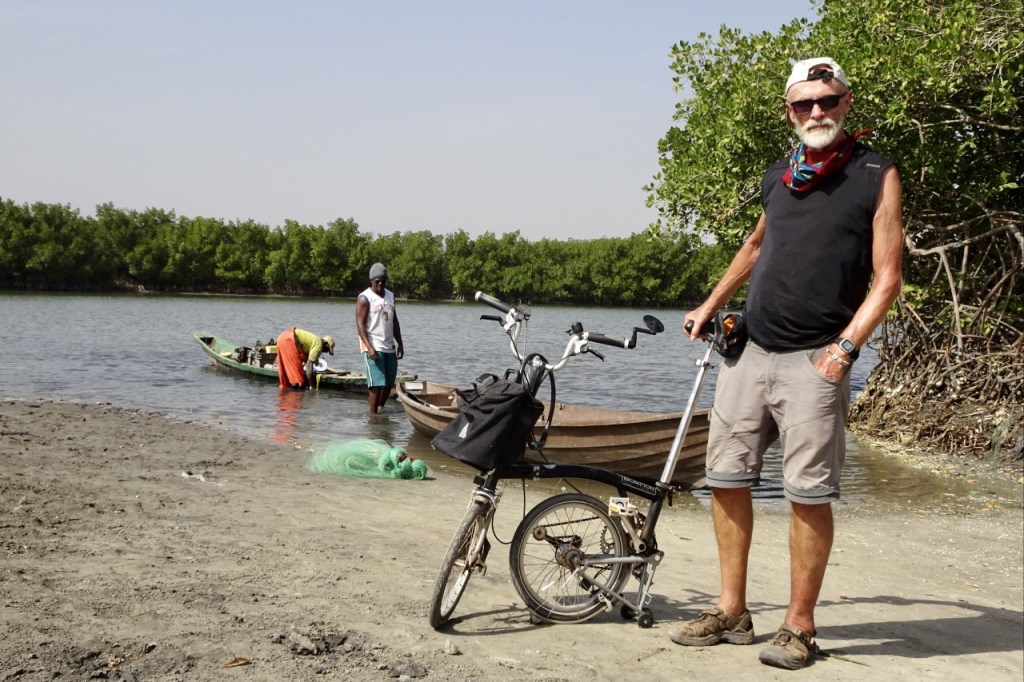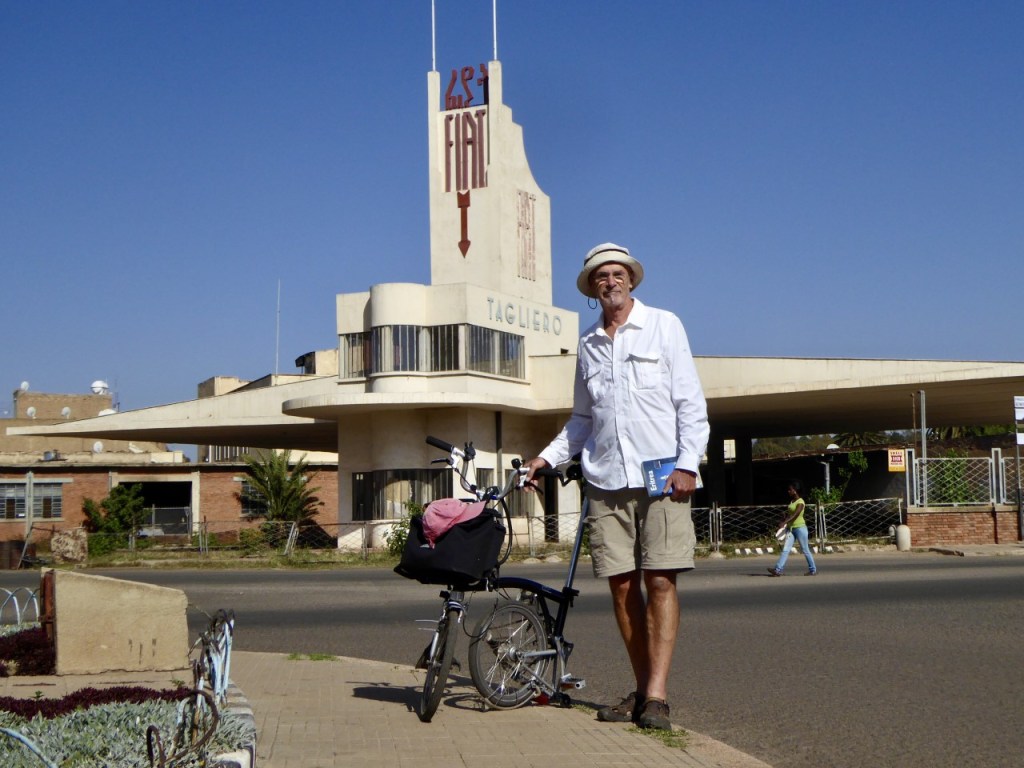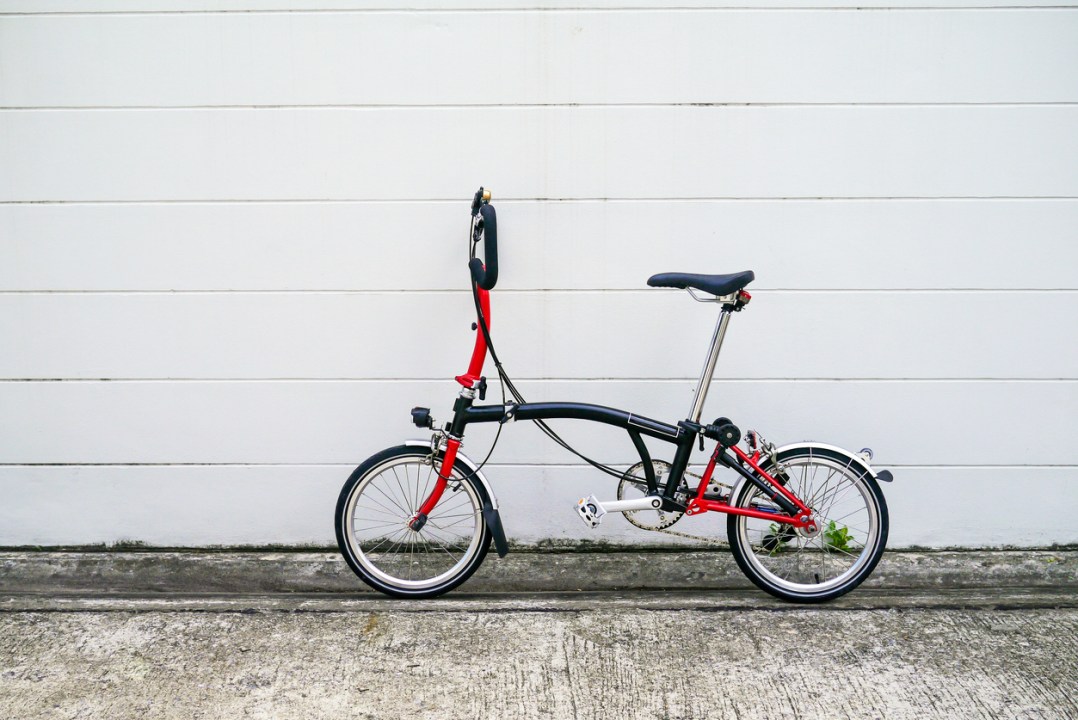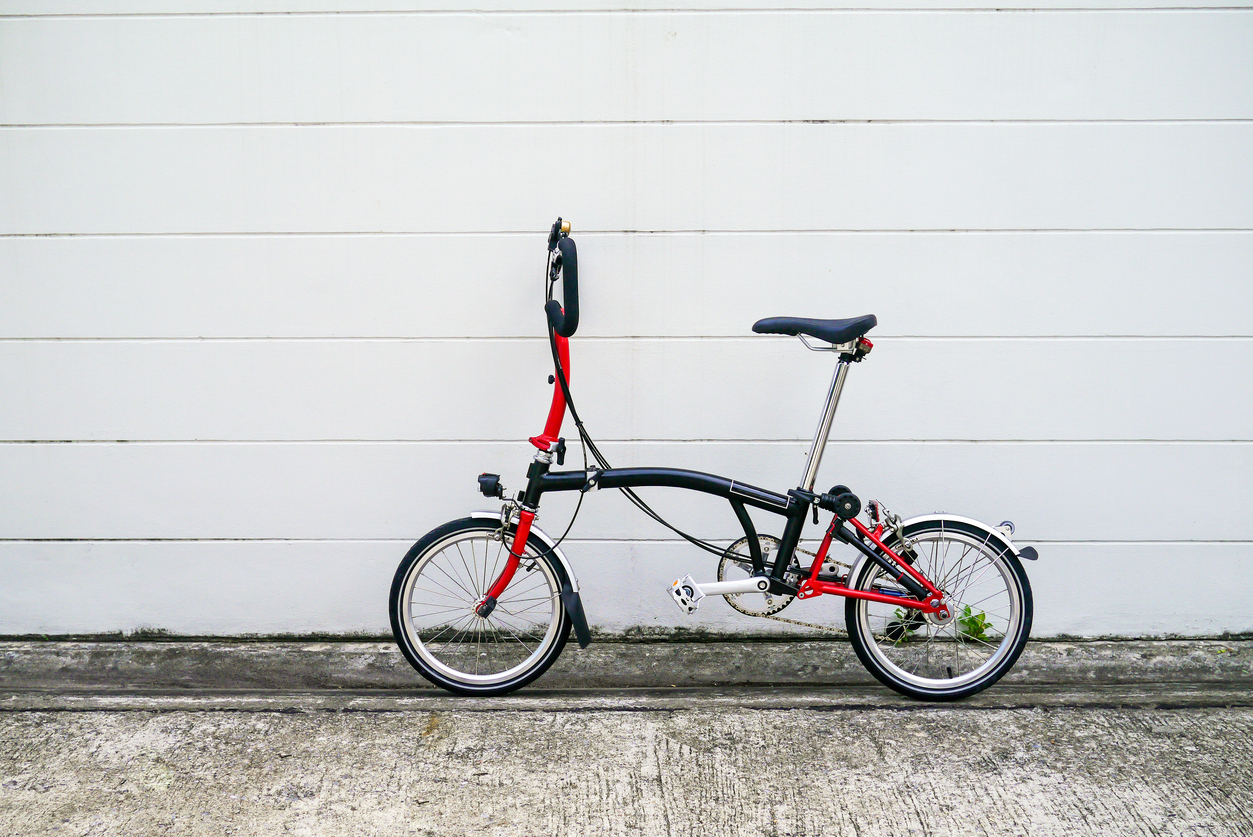The first time I set eyes on a Brompton, well over a quarter of a century ago on the Lincolnshire coast, I thought it was a child’s bike. When the owner returned, he took great delight in demonstrating its folding mechanism, untangling the metal tubes and cables. I decided I wanted one but delayed making the purchase until I reached retirement.
Much of the decade since then has been spent travelling solo to well over 100 countries across six continents – with my Brompton in tow. It has accompanied me to 42 European capital cities and several African countries. Unlike conventional road bikes, the great advantage of the Brompton is its portability. When folded, it can be easily transported on planes – I’ve managed to get a purpose-made zipped nylon bag for storing the bike in the hold – but it can also be brought as luggage on buses and trains and stored in hotel rooms. I take the minimum of gear on my travels and can pack all I need into a 20-litre bag that clips on to the front of the bike. Synthetic clothing can be laundered in hotel sinks and worn again the following day.

There are downsides: when travelling long distances, the Brompton is not as efficient as a road bike, and it has a limited range of gears which makes negotiating hills challenging. But in the developing world, the sight of a tall, elderly Englishman riding what looks like a kiddie bike attracts a great deal of perplexed but jolly attention. I’m always happy to lower the seat post to allow local children the opportunity to ride it.
My travels have left me with many stories to tell that simply wouldn’t have happened without my bike. In 2016, I travelled to Hungary and cycled around the shore of Lake Balaton, central Europe’s largest lake. On my return by train to Budapest I saw thousands of refugees huddled on the platforms and concourses of the capital’s historic Keleti railway station. Most were from the Middle East and some from Eritrea. Knowing very little about this tiny country in the Horn of Africa, I was guided in my understanding by Spectator contributor Michela Wrong’s beautifully written book I Didn’t Do It For You: How the World Used and Abused a Small African Nation – and my interest was piqued.

Requests to travel to Eritrea are usually refused. But after an exhaustive interview by a high-ranking official at the embassy in London, mine was somehow waved through. In October 2016, my Qatar Air flight touched down at the capital Asmara’s high-altitude airport. The country was colonised by the Italians up until the second world war and Asmara has been left with many beautiful Art Deco buildings. Eritrean people are charming, hospitable and welcoming. Cycling around town, I was often invited into homes for coffee, anniversary celebrations and even a wedding to share a plate of the national dish injera, a spongy flatbread served with various stews. These unplanned meetings would never have occurred without my Brompton.
Last year, I travelled with my bike to the Gambia between its northern and southern borders with Senegal (the latter entirely surrounds the former) following a route close to the Gambian Atlantic coastline. The UK Foreign Office advises against using the Barra-Banjul ferry that crosses the River Gambia (‘crowded and overloaded… safety not up to international standards… lack of life-saving equipment… instances of the ferry being stranded on sandbanks’ etc) and suggests a road bridge crossing much further inland. But I wasn’t prepared to make the huge detour on wheels no bigger than a large pizza. Although the ferry crossing was indeed colourful, the bigger risk to safety is Gambian traffic. Vehicles are in a poor state of repair, driven with little regard for others and crashes are common.

The fishing village of Gunjar is located a couple of miles along a dirt road off the main highway, home to the Chinese-owned Golden Lead fishmeal factory. Walking around the village, I was accosted by a security guard saying my presence had left his head feeling like ‘boiling soup’. I simply hopped on my Brompton and off I pedalled.
A few days later, I met Lamin, the groundskeeper at a mosque built on a rocky outcrop overlooking the Atlantic. He told me about a cow in his village that had been killed by a coconut falling on its head. Continuing my travel south I arrived at Kartong and the Casamance River which separates the Gambia’s southern border with Senegal. Although not an official border, there was a large volume of people and goods crossing the river in pirogues. My journey ended, perhaps unwisely, crossing into Senegal in a hollowed-out tree trunk with only my bike, unmolested by passport checks or border controls. This is the joy of the Brompton – the informal hops from one place to another, discovering parts of the world that few other tourists will ever see.







Comments